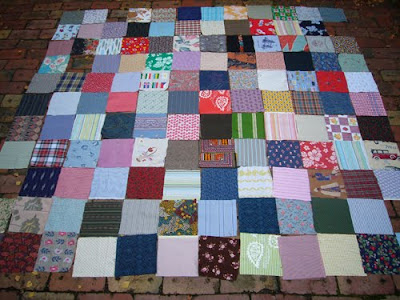 I love Staffordshire figures. They're quaint, colourful, a little kitsch. They play with scale in a way that I find appealing, and most importantly, they tell a story: kind of like illustrations in ceramic form. I often wonder about the thought process behind the decision to make certain personalities and their stories into diminutive three dimensional home decoration, and what it says about the society that bought them.
I love Staffordshire figures. They're quaint, colourful, a little kitsch. They play with scale in a way that I find appealing, and most importantly, they tell a story: kind of like illustrations in ceramic form. I often wonder about the thought process behind the decision to make certain personalities and their stories into diminutive three dimensional home decoration, and what it says about the society that bought them. Above image of evangelical hymn writing duo Moody and Sankey, from Comollo Antiques. The first popstar souvenirs?
Above image of evangelical hymn writing duo Moody and Sankey, from Comollo Antiques. The first popstar souvenirs?Above: An ale bench from the wonderful Myrna Schkolne, who writes in her book:
Beer was considered a nutritious dietary necessity because it was the safest, most palatable, most accessible liquid. Children drank it, and hospitals gave patients beer rather than water. England seemed to have a chronic crisis of drunkenness, or as Shakespeare’s Iago commented, “in England . . . they are most potent in potting.”
Of course that's a subject worth depicting in ceramic form (and buying to display proudly on the mantle)! It makes me want to step outside right now and make little figures of the men standing outside the pub getting wasted in their football scarves and beanies. That would be great.
 Above: the story of Lt. Munro who escaped the jaws of a tiger that tried to maul him in India. Kind of like me and my imagined clay AFL football fans, another contemporary artist has taken this Staffordshire story and put a contemporary twist on it, but in a slightly different way: Karen Thompson.
Above: the story of Lt. Munro who escaped the jaws of a tiger that tried to maul him in India. Kind of like me and my imagined clay AFL football fans, another contemporary artist has taken this Staffordshire story and put a contemporary twist on it, but in a slightly different way: Karen Thompson.
 Above: the story of Lt. Munro who escaped the jaws of a tiger that tried to maul him in India. Kind of like me and my imagined clay AFL football fans, another contemporary artist has taken this Staffordshire story and put a contemporary twist on it, but in a slightly different way: Karen Thompson.
Above: the story of Lt. Munro who escaped the jaws of a tiger that tried to maul him in India. Kind of like me and my imagined clay AFL football fans, another contemporary artist has taken this Staffordshire story and put a contemporary twist on it, but in a slightly different way: Karen Thompson.(This one courtesy of Myrna's blog.)
 Above: Bull Baiting, also from Myrna.
Above: Bull Baiting, also from Myrna.
 I love this these figures for their play on scale. Above image from Iconic in Edinburgh. Below: again Comollo.
I love this these figures for their play on scale. Above image from Iconic in Edinburgh. Below: again Comollo.

 And these figures from The Canterbury Auction Galleries look so quaint as a group that I like to imagine they are one: the giant bird watching over the house and the tree and the tiny figures.
And these figures from The Canterbury Auction Galleries look so quaint as a group that I like to imagine they are one: the giant bird watching over the house and the tree and the tiny figures.
 Above: Bull Baiting, also from Myrna.
Above: Bull Baiting, also from Myrna.
 And these figures from The Canterbury Auction Galleries look so quaint as a group that I like to imagine they are one: the giant bird watching over the house and the tree and the tiny figures.
And these figures from The Canterbury Auction Galleries look so quaint as a group that I like to imagine they are one: the giant bird watching over the house and the tree and the tiny figures. Maybe.
I could go on posting Staffordshire figures forever. However as I don't own any books on the subject I would probably just end up re-blogging from the site of Myrna Schkolne : the most rewarding online resource I have come across.
And of course, there are probably quite a few contemporary artists who like to play with the aesthetics of the Staffordshire figure and other popular ceramics from times past. I am a big fan of the witty and meticulous Melbourne artist Penny Byrne , whose work can be seen at Sullivan & Strumpf. (An excellent little gallery to visit by the way, if you are ever in the back streets of Paddington, Sydney.)











































